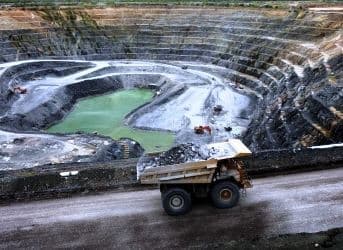Spot prices for uranium hit a two-year low last week at $45.75 amid a pending decision over Japan’s nuclear future, excess uranium inventories and slowing growth in China.
Japan is dragging its feet on making a decision on whether it will hold on to any of its nuclear fleet. Elections have to be held within less than a year, and no one is willing to risk a controversial decision before then.
Will low prices last? Most analysts seem to think we’re still months away from a uranium price spike that would bring it back to levels it enjoyed before the nuclear meltdown at Fukushima a year and a half ago. The month before the Fukushima meltdown, spot prices for uranium were close to $70.
Today, spot prices for Uranium One are down over 60%, while spot prices for Paladin are down over 70%.
Meanwhile, Japan has been sending mixed signals about its future nuclear plans. Since the disaster, only 5 out of 50 nuclear reactor units have been operational. Last week, Japan’s ministry of economy indicated that the oil reactors could be put back on line if deemed safe. At the same time, there are reports to the contrary, highlighting the uncertainty and the lack of will to address this issue ahead of elections.
Related Article: Nuclear Waste: A Valuable Source of Energy
Also, in September, the Japanese Cabinet unveiled a new energy policy that sets 2030 as a target date for ending the country’s dependence on nuclear power. This, too, is plagued by uncertainty and its fate may already have been sealed and the policy shelved.
While analysts had predicted the uranium slump, they also thought it would be eased by rising demand in Russia, China and India, three countries who have plans for 95 new reactors in the next two decades.
But while about half of these reactors are being built, it’s still too soon to be a boost for the uranium slump. At the first sign of real long-term contracting potential for uranium for these future reactors prices will rally. We are not quite there yet, though.
And while Russia, China and India are building new reactors, other countries are trying to wean themselves off nuclear energy entirely—among them, Germany and possibly Italy and Switzerland.
For the time being, uranium mining is not profitable and mining companies are either slowing or shelving big projects.
Earlier predictions that demand for uranium would again rise and drive prices upwards in 2015 now seem overly optimistic.
Related Article: Confidence in Nuclear Power is on the Rise Again
Some of this will depend on Japan’s decision, and so far what that decision will be is anyone’s guess. Signals have been mixed, at best.
ADVERTISEMENT
On 14 September, the government said it planned to phase out nuclear power entirely within the next two and a half decades. But what will happen in the meantime is unclear, and how many of the country’s 50 reactors will eventually be deemed safe and put back online will not be made clear until after elections.
There are some who disagree with this assessment, however, citing optimistic demand outlooks that could bring prices back to their heyday in the next couple of years. This is not likely, given the current pace of reactor construction in Russia, China and India, and the more realistic outlook for a spike in uranium prices in probably 4-6 years, during which time the dynamics of nuclear power could undergo numerous changes in relation to global renewable energy efforts.
By. Charles Kennedy of Oilprice.com


















